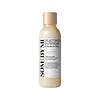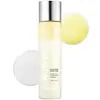What's inside
What's inside
 Key Ingredients
Key Ingredients

 Benefits
Benefits

 Concerns
Concerns

 Ingredients Side-by-side
Ingredients Side-by-side

Galactomyces Ferment Filtrate
HumectantGlycerin
HumectantCetyl Ethylhexanoate
EmollientPropanediol
SolventDicaprylyl Carbonate
Emollient1,2-Hexanediol
Skin ConditioningBetaine
HumectantCetearyl Alcohol
EmollientPolyglyceryl-10 Laurate
Skin ConditioningMethyl Trimethicone
Skin ConditioningSilica
AbrasiveCetearyl Olivate
Panthenol
Skin ConditioningPhenyl Trimethicone
Skin ConditioningPotassium Cetyl Phosphate
EmulsifyingWater
Skin ConditioningSorbitan Olivate
EmulsifyingBisabolol
MaskingAmmonium Polyacryloyldimethyl Taurate
Emulsion StabilisingHydroxyethyl Acrylate/Sodium Acryloyldimethyl Taurate Copolymer
Emulsion StabilisingDipropylene Glycol
HumectantSqualane
EmollientLaminaria Japonica Extract
Skin ProtectingEclipta Prostrata Leaf Extract
Skin Conditioning3-O-Ethyl Ascorbic Acid
Skin ConditioningGlutathione
Ethylhexylglycerin
Skin ConditioningParfum
MaskingLavandula Angustifolia Oil
MaskingCoptis Japonica Root Extract
Skin ConditioningXanthan Gum
EmulsifyingButylene Glycol
HumectantAdenosine
Skin ConditioningFructooligosaccharides
HumectantSorbitan Isostearate
EmulsifyingT-Butyl Alcohol
PerfumingHydrogenated Lecithin
EmulsifyingBeta-Glucan
Skin ConditioningHydrolyzed Hyaluronic Acid
HumectantAscorbic Acid
AntioxidantTocopherol
AntioxidantAllantoin
Skin ConditioningCeramide NP
Skin ConditioningOryza Sativa Bran Oil
EmollientOryza Sativa Bran Extract
Skin ConditioningGlyceryl Stearate
EmollientPhytosphingosine
Skin ConditioningCholesterol
EmollientCeramide AP
Skin ConditioningCeramide As
Skin ConditioningCeramide Ns
Skin ConditioningCaprylyl Glycol
EmollientCeramide Ng
Skin ConditioningCeramide EOP
Skin ConditioningLinalool
PerfumingLimonene
PerfumingGalactomyces Ferment Filtrate, Glycerin, Cetyl Ethylhexanoate, Propanediol, Dicaprylyl Carbonate, 1,2-Hexanediol, Betaine, Cetearyl Alcohol, Polyglyceryl-10 Laurate, Methyl Trimethicone, Silica, Cetearyl Olivate, Panthenol, Phenyl Trimethicone, Potassium Cetyl Phosphate, Water, Sorbitan Olivate, Bisabolol, Ammonium Polyacryloyldimethyl Taurate, Hydroxyethyl Acrylate/Sodium Acryloyldimethyl Taurate Copolymer, Dipropylene Glycol, Squalane, Laminaria Japonica Extract, Eclipta Prostrata Leaf Extract, 3-O-Ethyl Ascorbic Acid, Glutathione, Ethylhexylglycerin, Parfum, Lavandula Angustifolia Oil, Coptis Japonica Root Extract, Xanthan Gum, Butylene Glycol, Adenosine, Fructooligosaccharides, Sorbitan Isostearate, T-Butyl Alcohol, Hydrogenated Lecithin, Beta-Glucan, Hydrolyzed Hyaluronic Acid, Ascorbic Acid, Tocopherol, Allantoin, Ceramide NP, Oryza Sativa Bran Oil, Oryza Sativa Bran Extract, Glyceryl Stearate, Phytosphingosine, Cholesterol, Ceramide AP, Ceramide As, Ceramide Ns, Caprylyl Glycol, Ceramide Ng, Ceramide EOP, Linalool, Limonene
Water
Skin ConditioningTriethylhexanoin
MaskingHydrogenated Poly(C6-14 Olefin)
EmollientButylene Glycol
Humectant1,2-Hexanediol
Skin ConditioningMethylpropanediol
SolventNiacinamide
SmoothingPhenyl Trimethicone
Skin ConditioningDiethoxyethyl Succinate
SolventPolyglyceryl-10 Myristate
Skin ConditioningParfum
MaskingHippophae Rhamnoides Oil
EmollientEthylhexylglycerin
Skin ConditioningAllantoin
Skin ConditioningHydrogenated Lecithin
EmulsifyingHibiscus Esculentus Fruit Extract
Skin ConditioningCorchorus Olitorius Leaf Extract
Skin ConditioningCarum Petroselinum Extract
Skin ConditioningGlutathione
Sodium Gluconate
Skin ConditioningAdenosine
Skin ConditioningCellulose Gum
Emulsion StabilisingHexyl Cinnamal
PerfumingGluconolactone
Skin ConditioningMelia Azadirachta Leaf Extract
Skin ConditioningLinalool
PerfumingMelia Azadirachta Flower Extract
Skin ConditioningLavandula Angustifolia Flower Water
Skin ConditioningHyacinthus Orientalis Extract
Skin ConditioningCentaurea Cyanus Flower Extract
AstringentChamomilla Recutita Flower/Leaf Extract
AntimicrobialCurcuma Longa Root Extract
MaskingBorago Officinalis Extract
EmollientSalvia Sclarea Extract
AntiseborrhoeicLimonene
PerfumingAlpha-Arbutin
AntioxidantOcimum Sanctum Leaf Extract
Skin ConditioningCorallina Officinalis Extract
Skin ConditioningThioctic Acid
AntioxidantBiotin
AntiseborrhoeicBiotinoyl Tripeptide-1
Acetyl Hexapeptide-8
HumectantTripeptide-1
Skin ConditioningTripeptide-3
Skin ConditioningMyristoyl Pentapeptide-17
Skin ConditioningHexapeptide-9
Skin ConditioningWater, Triethylhexanoin, Hydrogenated Poly(C6-14 Olefin), Butylene Glycol, 1,2-Hexanediol, Methylpropanediol, Niacinamide, Phenyl Trimethicone, Diethoxyethyl Succinate, Polyglyceryl-10 Myristate, Parfum, Hippophae Rhamnoides Oil, Ethylhexylglycerin, Allantoin, Hydrogenated Lecithin, Hibiscus Esculentus Fruit Extract, Corchorus Olitorius Leaf Extract, Carum Petroselinum Extract, Glutathione, Sodium Gluconate, Adenosine, Cellulose Gum, Hexyl Cinnamal, Gluconolactone, Melia Azadirachta Leaf Extract, Linalool, Melia Azadirachta Flower Extract, Lavandula Angustifolia Flower Water, Hyacinthus Orientalis Extract, Centaurea Cyanus Flower Extract, Chamomilla Recutita Flower/Leaf Extract, Curcuma Longa Root Extract, Borago Officinalis Extract, Salvia Sclarea Extract, Limonene, Alpha-Arbutin, Ocimum Sanctum Leaf Extract, Corallina Officinalis Extract, Thioctic Acid, Biotin, Biotinoyl Tripeptide-1, Acetyl Hexapeptide-8, Tripeptide-1, Tripeptide-3, Myristoyl Pentapeptide-17, Hexapeptide-9
 Reviews
Reviews

Ingredients Explained
These ingredients are found in both products.
Ingredients higher up in an ingredient list are typically present in a larger amount.
1,2-Hexanediol is a synthetic liquid and another multi-functional powerhouse.
It is a:
- Humectant, drawing moisture into the skin
- Emollient, helping to soften skin
- Solvent, dispersing and stabilizing formulas
- Preservative booster, enhancing the antimicrobial activity of other preservatives
Adenosine is in every living organism. It is one of four components in nucleic acids that helps store our DNA.
Adenosine has many benefits when used. These benefits include hydrating the skin, smoothing skin, and reducing wrinkles. Once applied, adenosine increases collagen production. It also helps with improving firmness and tissue repair.
Studies have found adenosine may also help with wound healing.
In skincare products, Adenosine is usually derived from yeast.
Learn more about AdenosineAllantoin is a soothing ingredient known for its protective and moisturizingg properties. Because of this, it is often added to products with strong active ingredients.
Studies show higher concentrations of this ingredient can promote wound healing.
Though it can be derived from the comfrey plant, allantoin is produced synthetically for cosmetic products to ensure purity.
Learn more about AllantoinButylene Glycol (or BG) is used within cosmetic products for a few different reasons:
Overall, Butylene Glycol is a safe and well-rounded ingredient that works well with other ingredients.
Though this ingredient works well with most skin types, some people with sensitive skin may experience a reaction such as allergic rashes, closed comedones, or itchiness.
Learn more about Butylene GlycolEthylhexylglycerin (we can't pronounce this either) is commonly used as a preservative and skin softener. It is derived from glyceryl.
You might see Ethylhexylglycerin often paired with other preservatives such as phenoxyethanol. Ethylhexylglycerin has been found to increase the effectiveness of these other preservatives.
Glutathione is an antioxidant naturally found in our bodies. It is made up of three amino acids: glycine, cysteine, and glutamic acid.
As an antioxidant, it prevents oxidative damage to parts of our cell.
While glutathione is said to help with fading dark spots, the results from research are inconclusive. Further studies are needed. With that said, gluthatione has been shown to protect our skin from UV-B induced damage.
This ingredient is naturally occurring in plants, animals, fungi, and some bacteria.
Learn more about GlutathioneHydrogenated Lecithin is created from the hydrogenation of lecithin (a group of phospholipids). Hydrogenation is a chemical reaction between hydrogen and another element.
This ingredient is an emollient and emulsifier. As an emollient, it helps soften skin by trapping moisture within. As an emulsifier, it prevents oil and water ingredients from separating.
Limonene is a fragrance that adds scent and taste to a formulation.
It's found in the peel oil of citrus fruits and other plants such as lavender and eucalyptus. The scent of limonene is generally described as "sweet citrus".
Limonene acts as an antioxidant, meaning it helps neutralize free radicals.
When exposed to air, oxidized limonene may sensitize the skin. Because of this, limonene is often avoided by people with sensitive skin.
The term 'fragrance' is not regulated in many countries. In many cases, it is up to the brand to define this term. For instance, many brands choose to label themselves as "fragrance-free" because they are not using synthetic fragrances. However, their products may still contain ingredients such as essential oils that are considered a fragrance.
Learn more about LimoneneLinalool is a fragrance and helps add scent to products. It's derived from common plants such as cinnamon, mint, citrus, and lavender.
Like Limonene, this ingredient oxidizes when exposed to air. Oxidized linalool can cause allergies and skin sensitivity.
This ingredient has a scent that is floral, spicy tropical, and citrus-like.
Learn more about LinaloolParfum is a catch-all term for an ingredient or more that is used to give a scent to products.
Also called "fragrance", this ingredient can be a blend of hundreds of chemicals or plant oils. This means every product with "fragrance" or "parfum" in the ingredients list is a different mixture.
For instance, Habanolide is a proprietary trade name for a specific aroma chemical. When used as a fragrance ingredient in cosmetics, most aroma chemicals fall under the broad labeling category of “FRAGRANCE” or “PARFUM” according to EU and US regulations.
The term 'parfum' or 'fragrance' is not regulated in many countries. In many cases, it is up to the brand to define this term.
For instance, many brands choose to label themselves as "fragrance-free" because they are not using synthetic fragrances. However, their products may still contain ingredients such as essential oils that are considered a fragrance by INCI standards.
One example is Calendula flower extract. Calendula is an essential oil that still imparts a scent or 'fragrance'.
Depending on the blend, the ingredients in the mixture can cause allergies and sensitivities on the skin. Some ingredients that are known EU allergens include linalool and citronellol.
Parfum can also be used to mask or cover an unpleasant scent.
The bottom line is: not all fragrances/parfum/ingredients are created equally. If you are worried about fragrances, we recommend taking a closer look at an ingredient. And of course, we always recommend speaking with a professional.
Learn more about ParfumPhenyl Trimethicone is a silicon-based polymer. It is derived from silica.
Phenyl Trimethicone is used as an emollient and prevents products from foaming.
As an emollient, it helps trap moisture in the skin. It is considered an occlusive.
Learn more about Phenyl TrimethiconeWater. It's the most common cosmetic ingredient of all. You'll usually see it at the top of ingredient lists, meaning that it makes up the largest part of the product.
So why is it so popular? Water most often acts as a solvent - this means that it helps dissolve other ingredients into the formulation.
You'll also recognize water as that liquid we all need to stay alive. If you see this, drink a glass of water. Stay hydrated!
Learn more about Water